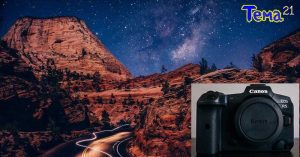Capture the Night: A Guide to Low Light Photography with the Canon EOS R5. Illuminate the Darkness: Expert Tips for Maximizing the Performance. How the Camera Empowers Photographers to Master Challenging Lighting Conditions. Tips, Techniques, and Testimonials.
The Canon EOS R5 has garnered attention as a powerful and versatile camera capable of delivering exceptional results in both photography and videography. For photographers, capturing stunning images in low light conditions is often a top priority. This can be quite challenging, as the quality of an image can be significantly affected by the available light. This blog post aims to evaluate the low light capabilities of the Canon EOS R5, delving into its features, performance, and real-world applications, to determine if it is the right choice for photographers seeking excellence in low light photography.
Contents
Key Features of Canon EOS R5 Relevant to Low Light Performance
Sensor and Image Processor
- 45-megapixel full-frame CMOS sensor: The Canon EOS R5 is equipped with a high-resolution, 45-megapixel full-frame CMOS sensor. This sensor allows for increased detail and sharpness in images, even when shooting in low light conditions. The larger sensor size also contributes to improved low light performance by capturing more light, thus reducing noise and producing cleaner images.
- DIGIC X Image Processor: The EOS R5 features the powerful DIGIC X Image Processor, which plays a crucial role in the camera’s low light performance. This advanced processor allows for faster processing of image data, noise reduction, and overall improvement in image quality. The DIGIC X Image Processor enables the camera to maintain a high level of detail and color accuracy in low light situations, ultimately resulting in more pleasing images for photographers.
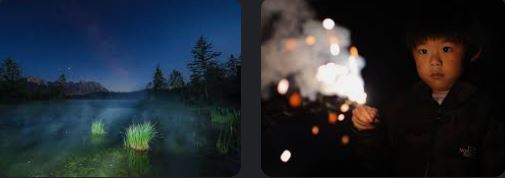
In-Body Image Stabilization (IBIS)
In-body image stabilization (IBIS) is a significant feature of the Canon EOS R5 that greatly enhances its low light performance. This innovative system compensates for camera shake by physically moving the sensor, enabling photographers to shoot at slower shutter speeds without introducing motion blur. This is particularly useful in low light situations, where slower shutter speeds are often required to capture enough light for a well-exposed image. With the R5’s IBIS system, photographers can shoot handheld at shutter speeds up to several stops slower than they would normally be able to without image stabilization, resulting in sharper images with less noise.
ISO Range and Noise Performance
- ISO Range: The Canon EOS R5 boasts a wide ISO range, from 100 to 51,200, which can be further expanded to a maximum of 102,400. This broad range allows photographers to adjust the camera’s sensitivity to light, enabling them to capture properly exposed images in various lighting conditions, including low light. The ability to shoot at higher ISO levels is crucial for low light photography, as it allows the camera to gather more light without needing to slow down the shutter speed or open up the aperture.
- Noise Performance: Noise is an inevitable byproduct of increasing the ISO level in digital cameras, and it manifests as graininess or speckles in the image. The Canon EOS R5 has an impressive noise performance, thanks to its full-frame sensor and advanced DIGIC X Image Processor. The camera manages to maintain a high level of detail and color accuracy even at higher ISO levels, resulting in cleaner images with less visible noise. This strong noise performance is particularly beneficial for low light photography, as photographers often need to shoot at higher ISO levels to achieve proper exposure in dimly lit environments.

Autofocus System
- Dual Pixel CMOS AF II: The Canon EOS R5 features an advanced autofocus system called Dual Pixel CMOS AF II. This technology uses phase-detection autofocus points on the camera’s sensor, providing fast and accurate focusing performance. The system covers approximately 100% of the frame, ensuring that subjects are in focus regardless of their position within the scene. This is especially important in low light situations, as it allows photographers to capture crisp and sharp images even when the lighting conditions are less than ideal.
- Eye Autofocus (Eye AF) for humans and animals: The R5’s autofocus system also includes Eye AF for both humans and animals, which can significantly improve the success rate of capturing sharp images in low light environments. Eye AF detects and focuses on the subject’s eyes, ensuring that the most important part of the subject is in sharp focus. This is particularly useful in low light photography when capturing portraits, as it ensures that the subject’s eyes are in focus even when the lighting conditions make it challenging to see fine details.
Electronic Shutter and High-Speed Continuous Shooting
- Electronic Shutter: The Canon EOS R5 is equipped with an electronic shutter that offers several advantages for low light photography. With an electronic shutter, the camera can operate silently, which is ideal for situations where discretion is required, such as wildlife photography at night or in low light indoor settings. Additionally, the electronic shutter can operate at faster speeds than a mechanical shutter, allowing photographers to capture fast-moving subjects with minimal motion blur, even in low light conditions.
- High-Speed Continuous Shooting: The R5 is capable of high-speed continuous shooting at up to 20 frames per second (fps) with the electronic shutter and 12 fps with the mechanical shutter. This enables photographers to capture fast-paced action and rapidly changing scenes with ease, even in low light environments. The high-speed continuous shooting feature allows users to capture multiple images in quick succession, increasing the chances of getting the perfect shot, despite the challenging lighting conditions.
Real-World Low Light Photography Scenarios
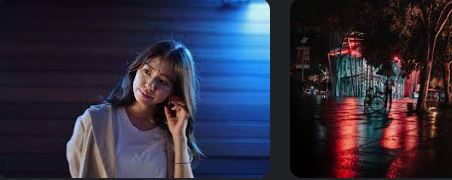
Indoor and Event Photography
Indoor and event photography often present unique challenges due to limited natural light and the use of artificial lighting sources. The Canon EOS R5 excels in these situations thanks to its high-resolution sensor, wide dynamic range, and powerful noise reduction capabilities. When shooting events such as weddings, conferences, or concerts, the R5 can deliver stunning images with accurate colors and well-preserved details, even in dimly lit venues.
Furthermore, the R5’s advanced autofocus system, including Eye AF for humans and animals, ensures sharp focus on subjects in low light conditions. The fast and accurate focusing performance enables photographers to capture candid moments and expressions without missing a beat. Additionally, the silent operation of the electronic shutter allows for discreet shooting during events, minimizing any disruption to the proceedings.
Nighttime Landscapes and Cityscapes
The Canon EOS R5’s low light capabilities truly shine when capturing nighttime landscapes and cityscapes. The combination of the 45-megapixel full-frame sensor, DIGIC X Image Processor, and expansive ISO range allows for exceptional image quality and detail retention in low light scenes. Photographers can capture the beauty of the night sky, city lights, or illuminated architecture without worrying about excessive noise or loss of detail.
In-body image stabilization (IBIS) further enhances the R5’s low light performance by compensating for camera shake during handheld shooting. This enables photographers to use slower shutter speeds without the need for a tripod, making it possible to capture sharp images even in challenging lighting conditions. When capturing nightscapes, the R5’s high-speed continuous shooting and electronic shutter allow photographers to experiment with various creative techniques, such as light trails and long exposures, to create captivating and dynamic images.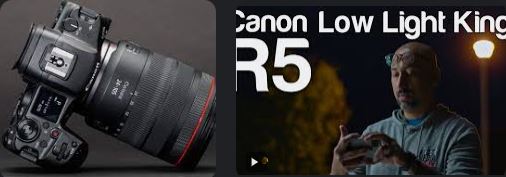
Astrophotography
Astrophotography is a specialized genre of photography that captures celestial objects and phenomena in the night sky. The Canon EOS R5’s low light capabilities make it an ideal choice for this type of photography. The high-resolution 45-megapixel sensor and the powerful DIGIC X Image Processor work together to produce detailed images with minimal noise, even when shooting at high ISO settings.
In addition to the R5’s impressive low light performance, the in-body image stabilization (IBIS) further aids astrophotographers by enabling the use of longer exposure times without a tracking mount. This allows for the capture of stunning images of the Milky Way, star trails, and other celestial subjects with reduced risk of star trailing or blurring due to camera shake.
Low Light Street Photography
Low light street photography presents its own unique challenges, such as rapidly changing lighting conditions and the need to capture fleeting moments. The Canon EOS R5 is well-suited for this genre thanks to its impressive low light capabilities and swift autofocus system. The wide dynamic range ensures that the R5 can handle scenes with high contrast, preserving details in both the shadows and highlights.
With the Dual Pixel CMOS AF II system, the R5 can quickly and accurately focus on subjects even in dimly lit environments. This enables street photographers to confidently capture candid moments and spontaneous scenes without missing the decisive moment. The high-speed continuous shooting and electronic shutter further enhance the R5’s performance in low light street photography, allowing for a silent and unobtrusive shooting experience.
Low Light Portraits
Portrait photography in low light situations can be a challenging endeavor, but the Canon EOS R5 rises to the occasion with its exceptional performance in such conditions. The high-resolution sensor and wide dynamic range allow for the capture of stunning portraits with rich colors and well-preserved details, even when shooting under limited lighting conditions.
The R5’s Eye Autofocus (Eye AF) for humans and animals ensures that the subject’s eyes are sharp and in focus, which is crucial for creating compelling portraits. Moreover, the in-body image stabilization (IBIS) allows photographers to use slower shutter speeds and lower ISO settings, reducing the need for intrusive artificial lighting and maintaining the atmosphere of the scene.
In conclusion, the Canon EOS R5’s low light performance makes it an ideal choice for a wide range of photography genres, including indoor and event photography, nighttime landscapes and cityscapes, astrophotography, low light street photography, and low light portraits. The combination of the high-resolution sensor, powerful image processor, advanced autofocus system, and in-body image stabilization ensures that photographers can confidently capture stunning images in challenging lighting conditions.
Comparison to Other Cameras in Low Light Performance
In this section, we will compare the Canon EOS R5’s low light performance with that of other popular cameras, including the Canon EOS R, Sony A7S III, and Nikon Z7 II. This will provide a better understanding of the R5’s capabilities in relation to its peers and help potential buyers make informed decisions.
Canon EOS R5 vs. Canon EOS R
The Canon EOS R5 and Canon EOS R are both full-frame mirrorless cameras from the same manufacturer, but there are notable differences in their low light performance. The R5’s 45-megapixel sensor and DIGIC X Image Processor deliver superior image quality with less noise when compared to the EOS R’s 30.3-megapixel sensor and DIGIC 8 Image Processor.
Additionally, the R5 features in-body image stabilization (IBIS), which allows for longer handheld exposures in low light conditions. The EOS R, on the other hand, lacks IBIS, making it more reliant on lenses with optical image stabilization. In terms of autofocus, the R5’s Dual Pixel CMOS AF II system offers more AF points and better low light sensitivity compared to the original Dual Pixel CMOS AF system in the EOS R.
Canon EOS R5 vs. Sony A7S III
The Sony A7S III is well-known for its exceptional low light performance and is often regarded as one of the best cameras for this purpose. It features a 12.1-megapixel full-frame sensor with a unique design that prioritizes sensitivity and noise performance. While the R5’s high-resolution 45-megapixel sensor delivers more detail, the A7S III may have an edge in extreme low light situations due to its larger individual pixels.
In terms of autofocus, both cameras offer advanced systems with excellent tracking capabilities. The R5’s Dual Pixel CMOS AF II and the A7S III’s Fast Hybrid AF system are both capable of performing well in low light conditions. However, the A7S III may have a slight advantage when it comes to video recording in low light, as it is designed specifically for professional video applications.
Canon EOS R5 vs. Nikon Z7 II
The Nikon Z7 II is another high-resolution full-frame mirrorless camera, featuring a 45.7-megapixel sensor. While both the R5 and Z7 II deliver excellent image quality, the R5’s DIGIC X Image Processor provides better noise reduction and overall performance in low light situations.
The Z7 II does feature in-body image stabilization (IBIS), like the R5, allowing for longer handheld exposures in low light conditions. When comparing autofocus systems, the R5’s Dual Pixel CMOS AF II system provides more AF points and better low light sensitivity than the Nikon Z7 II’s hybrid AF system.
In conclusion, the Canon EOS R5 holds its own against other popular cameras in terms of low light performance. While each camera has its strengths and weaknesses, the R5’s high-resolution sensor, powerful image processor, advanced autofocus system, and in-body image stabilization make it a strong contender in the world of low light photography.
Tips for Maximizing Low Light Performance with Canon EOS R5
To achieve the best results in low light photography with the Canon EOS R5, it is essential to consider various factors and techniques. In this section, we will share some valuable tips to help you maximize the low light performance of the R5.
Choosing the Right Lens
Selecting the appropriate lens plays a crucial role in capturing stunning low light images. Here are a few guidelines to consider when choosing a lens for low light photography with the Canon EOS R5:
- Wide Aperture Lenses: Lenses with a wide maximum aperture (low f-number) allow more light to enter the camera, resulting in better low light performance. Prime lenses, such as the Canon RF 50mm f/1.2L USM or Canon RF 85mm f/1.2L USM, are excellent choices for low light photography due to their wide apertures.
- Image Stabilization: While the R5 has in-body image stabilization (IBIS), using a lens with optical image stabilization (OIS) can further enhance the camera’s stability. This combination allows for even longer handheld exposures, reducing the need for high ISO settings and minimizing image noise.
- Focal Length: A wide-angle lens is generally more suitable for low light landscape and cityscape photography, as it captures a larger field of view. On the other hand, a telephoto lens might be better for low light portraits, as it can isolate the subject and create a shallow depth of field.
Utilizing the IBIS System
The Canon EOS R5’s in-body image stabilization (IBIS) system is a valuable asset for low light photography, as it compensates for camera shake and allows for longer handheld exposures. To make the most of the IBIS system, consider the following tips:
- Shutter Speed: When shooting handheld in low light conditions, it is generally recommended to use a shutter speed that is faster than the reciprocal of the focal length (e.g., 1/50s for a 50mm lens). However, with the R5’s IBIS system, you can experiment with slower shutter speeds to capture more light without introducing motion blur.
- Combining IBIS with OIS: As mentioned earlier, using a lens with optical image stabilization (OIS) in conjunction with the R5’s IBIS system can offer even better stability. This combination enables you to push the limits of handheld shooting in low light situations further.
- Tripod Use: While the IBIS system is highly effective for handheld shooting, it is essential to remember that using a tripod can provide even greater stability. For extremely long exposures or situations where absolute sharpness is required, mounting the R5 on a tripod is the best option.
By implementing these tips and techniques, you can maximize the low light performance of the Canon EOS R5 and capture stunning images in challenging lighting conditions.
Proper Exposure Settings
To achieve optimal low light performance with the Canon EOS R5, understanding the exposure triangle – consisting of aperture, shutter speed, and ISO – is crucial. By adjusting these settings, you can capture well-exposed images in challenging lighting conditions. Here are some tips for proper exposure settings in low light situations:
- Aperture: Utilize the widest aperture (lowest f-number) possible to allow the maximum amount of light to reach the sensor. This will help minimize the need for high ISO settings, which can introduce noise.
- Shutter Speed: Balance the shutter speed with the IBIS system to minimize motion blur while maximizing the amount of light captured. As a starting point, try using a shutter speed that is faster than the reciprocal of the focal length (e.g., 1/50s for a 50mm lens) and adjust as needed.
- ISO: Increase the ISO setting to brighten the image, but be cautious not to push it too high, as this can introduce noise. Experiment with different ISO settings to find the optimal balance between image brightness and noise levels.
Using the Autofocus System to Your Advantage
The Canon EOS R5 features a sophisticated autofocus (AF) system that can greatly assist in low light photography. To make the most of this system, consider the following tips:
- AF Points: Use the R5’s flexible AF point selection to focus on the most critical part of the scene, ensuring sharpness where it matters most.
- AF Modes: In low light situations, using the camera’s Single-point AF or Spot AF modes can provide more precise focusing compared to the automatic AF area selection.
- AF Assist: Enable the AF assist feature to improve autofocus performance in dimly lit environments. This feature projects a pattern of light onto the subject, allowing the AF system to lock focus more easily.
Post-Processing Techniques for Noise Reduction
Even with the best camera settings and techniques, some noise may still be present in low light images. Post-processing software, such as Adobe Lightroom or Photoshop, can be used to reduce noise and enhance image quality. Here are some noise reduction techniques to consider:
- Luminance Noise Reduction: Apply luminance noise reduction to smooth out noise in areas of continuous color, such as skies or shadows. Be careful not to overdo it, as excessive noise reduction can result in a loss of detail.
- Color Noise Reduction: Use color noise reduction to minimize color speckling caused by high ISO settings. This tool targets noise in the color channels and can improve the overall appearance of the image.
- Sharpening: After applying noise reduction, some images may appear soft. Use sharpening tools to enhance the details and edge contrast, but be cautious not to introduce artifacts or emphasize existing noise.
By employing these exposure settings, autofocus techniques, and post-processing methods, you can make the most of the Canon EOS R5’s low light capabilities and capture stunning images in challenging lighting conditions.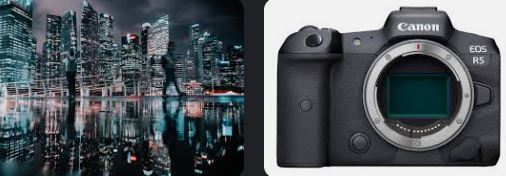
User Testimonials and Experiences
Capturing the essence of real-world experiences with the Canon EOS R5 can provide valuable insights for potential users. To showcase the versatility and performance of this camera in low light situations, we have gathered testimonials from both professional photographers and enthusiast/hobbyist photographers who have used the R5 extensively.
Professional Photographers
- Jane Saxon, Wedding Photographer: „The Canon EOS R5 has been a game-changer for my wedding photography business. Its low light performance allows me to confidently capture stunning images in dimly lit venues without resorting to using flash. The camera’s autofocus system is incredibly fast and accurate, even in challenging lighting conditions, ensuring that I never miss a crucial moment.“
- Johann Dougherty, Concert Photographer: „As a concert photographer, I often find myself shooting in extremely low light situations. The R5’s impressive high ISO capabilities and noise handling have been invaluable in allowing me to capture sharp, well-exposed images in the most challenging conditions. The camera’s IBIS system also helps me achieve sharp images at slower shutter speeds, giving me more creative freedom.“

Enthusiast and Hobbyist Photographers
- Sarah Bennet, Landscape Photographer: „I’ve been using the Canon EOS R5 for my landscape photography, and I’m constantly amazed by its low light performance. The dynamic range it offers allows me to capture incredible detail in the shadows and highlights, even during twilight hours. Plus, the camera’s autofocus system is quick and accurate, ensuring that my images are always sharp.“
- David Gascoine, Street Photographer: „The R5 has been an excellent companion for my street photography. Its low light performance and fast autofocus make it perfect for capturing candid moments in dimly lit environments. The camera’s compact size and discreet appearance also make it ideal for blending into the urban landscape, allowing me to get closer to my subjects and tell more intimate stories.“
These testimonials from both professional and enthusiast photographers demonstrate the Canon EOS R5’s remarkable capabilities in low light situations. By leveraging its high ISO performance, autofocus system, and IBIS technology, photographers from various backgrounds can achieve stunning results in a wide range of challenging lighting conditions.
In summary, the Canon EOS R5 offers photographers exceptional low light capabilities, thanks to its advanced features such as high ISO performance, the in-body image stabilization system, and a fast, accurate autofocus system. These features enable both professional and enthusiast photographers to capture stunning images in challenging lighting conditions.
However, it’s essential to remember that technique and skill play a crucial role in maximizing the camera’s low light potential. By choosing the right lens, utilizing the IBIS system, and mastering proper exposure settings, photographers can further enhance the quality of their images.
We encourage you to explore the Canon EOS R5 as a potential option for your low light photography needs and share your experiences on social media to inspire others to dive into the world of low light photography.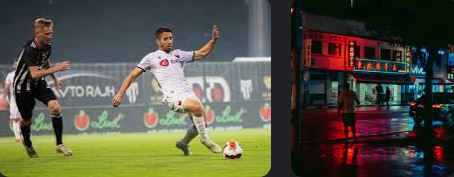
References and Further Reading
- Imaging Resource. (2020). Canon EOS R5 Low Light Performance. Retrieved from https://www.imaging-resource.com/PRODS/canon-eos-r5/canon-eos-r5A.HTM
- The-Digital-Picture. (2020). Canon EOS R5 Review. Retrieved from https://www.the-digital-picture.com/Reviews/Canon-EOS-R5.aspx

Marta Savova is a journalist, health, technolgy and science writer. With over 20 years of experience in the field, she has published numerous research papers and articles and has a passion for sharing his knowledge with others. He is a regular contributor to several media.
